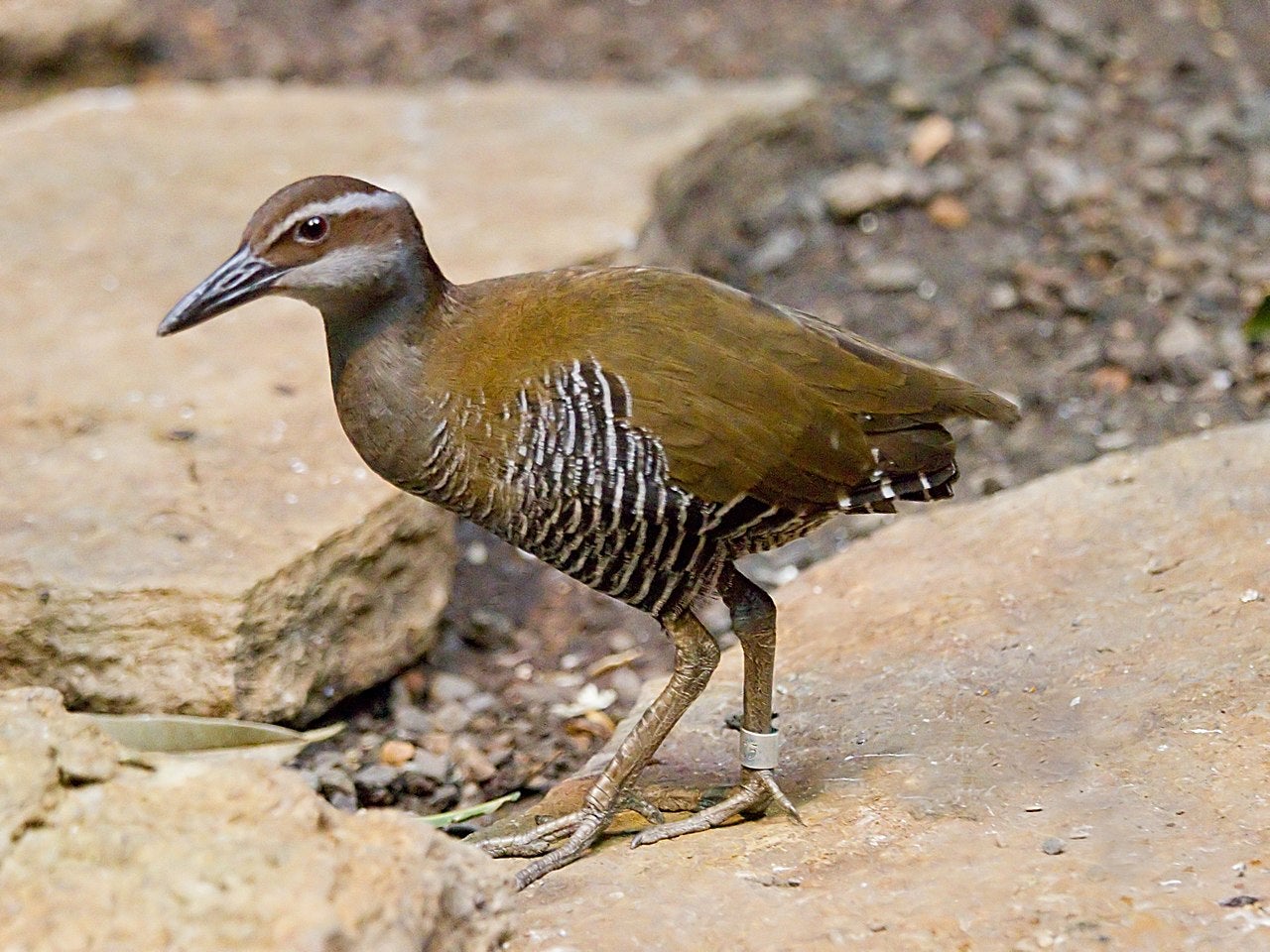Wildlife crisis: ‘Spark of hope’ as species declared extinct is rediscovered
Ten species including the flightless 'Guam rail' have made recoveries due to conservation efforts, but 73 have declined, update to IUCN Red List reveals

A rare bird believed to have gone extinct in the wild in 1987 is among several species which are making a comeback and offering a “spark of hope” for conservation efforts, experts have said.
The flightless, fast-running Guam rail was once widespread on the Pacific island after which it is named, but numbers plummeted when the brown tree snake was accidentally introduced at the end of the Second World War – with the last wild rail killed in 1987 by the predator.
Though still critically endangered, a captive breeding programme spanning 35 years has now helped establish the Guam rail on the neighbouring Cocos Island.
The news comes with an update to the IUCN Red List, which charts species known to be at risk of extinction. Amid the consistent annihilation of species as the Earth’s sixth mass extinction event gathers steam, the occasional glimmer of optimism remains in some quarters, where such conservation efforts are having their desired effect.
But despite the "genuine improvement" in the fate of 10 species seen in the update, 73 species have seen their places on the planet become more imperilled and a total of 30,178 animals and plants are on the list and deemed to be close to extinction.
Insects at risk of extinction
Show all 12The human-driven climate crisis is among the key threats to wildlife, the IUCN noted, while other factors include human overpopulation and overconsumption.
Important habitats such as coral reefs are being devastated by rapidly warming oceans while increased incidences of extreme weather are hitting plants and animals as well as people.
IUCN acting director general Dr Grethel Aguilar said: “This IUCN Red List update offers a spark of hope in the midst of the biodiversity crisis.
“Though we have witnessed 73 genuine species declines, the stories behind the 10 genuine improvements prove that nature will recover if given half a chance.”
She said: “Climate change is adding to the multiple threats species face, and we need to act urgently and decisively to curb the crisis.”
Another captive breeding programme as part of conservation efforts on the island of Mauritius in the Indian Ocean has helped boost numbers of the echo parakeet, whose numbers now exceed 750 birds.
It has seen its status improve in the latest update to “vulnerable”, the lowest risk category for wildlife threatened with extinction, having previously improved from critically endangered to endangered in 2007.
Two freshwater species of fish have also seen a boost thanks to decades of conservation work to establish more sub-populations through reintroductions and shifting wild fish to new sites.
The Australian trout cod improved its status from “endangered” to “vulnerable to extinction”, and the pedder galaxias – a freshwater fish once believed to be extinct – has improved from “critically endangered” to “endangered” in Tasmania.
But the update to the Red List also shows how the climate crisis and direct human activity are affecting species by altering their habitats or through extreme weather events.
The short-tail nurse shark, which lives in the western Indian Ocean, has declined by around four fifths over 30 years in the face of over-fishing and climate change, losing its shallow water habitat as the coral reef is hit in part by ocean warming.
Dominica’s national bird, the imperial parrot, is also under threat from climate change as more frequent and intense hurricanes batter the Caribbean, killing birds and destroying their habitat as well as causing devastation for people.
The parrot went from being “endangered” to “critically endangered” after the enormous damage done by Hurricane Maria in 2017, and there are now estimated to be fewer than 50 mature individuals left in the wild.
The update to the Red List also reveals declining fortunes for the European rabbit which, though widespread through introductions, is now endangered in its natural range across Spain, Portugal and southern France.
And Kenya’s Tana River red colobus, among the world’s most threatened primates, is now listed as critically endangered because of habitat loss.
All known species of eucalypt plants have been assessed in the Red List update and it finds almost a quarter of them are threatened with extinction, including the Eucalyptus moluccana which is the sole food source for koalas.
Additional reporting by Press Association
Subscribe to Independent Premium to bookmark this article
Want to bookmark your favourite articles and stories to read or reference later? Start your Independent Premium subscription today.

Join our commenting forum
Join thought-provoking conversations, follow other Independent readers and see their replies